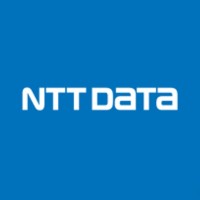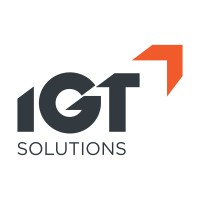
Google Play Company Cyber Security Posture
google.comEnjoy millions of the latest Android apps, games, music, movies, TV, books, magazines & more.
Google Play Company Details
google-play
196 employees
4329.0
541
IT Services and IT Consulting
google.com
94
GOO_2679708
In-progress
Between 900 and 1000
This score is AI-generated and less favored by cyber insurers, who prefer the TPRM score.
 Google Play Global Score
Google Play Global Score.png)

Google Play Company Scoring based on AI Models
| Model Name | Date | Description | Current Score Difference | Score |
|---|---|---|---|---|
| AVERAGE-Industry | 03-12-2025 | This score represents the average cybersecurity rating of companies already scanned within the same industry. It provides a benchmark to compare an individual company's security posture against its industry peers. | N/A | Between 900 and 1000 |
Google Play Company Cyber Security News & History
| Entity | Type | Severity | Impact | Seen | Url ID | Details | View |
|---|---|---|---|---|---|---|---|
| Google Play | Breach | 85 | 4 | 7/2024 | GOO000080424 | Link | |
Rankiteo Explanation : Attack with significant impact with customers data leaksDescription: Over 32,000 downloads of Mandrake spyware-laced apps from Google Play have led to a significant cyber security incident. The sophisticated Mandrake Android spyware, discovered by Kaspersky, employs advanced evasion techniques and obfuscation, allowing attackers to take complete control over infected devices and exfiltrate sensitive user data without detection. Despite being present on the platform since 2022, the spyware remained undetected for over two years, with the most downloaded app, AirFS, garnering over 30,000 downloads alone. The impact of this security lapse has raised concerns within the cybersecurity community about the efficacy of current app marketplace security measures. | |||||||
| Google Play Store | Breach | 85 | 4 | 9/2024 | GOO001100324 | Link | |
Rankiteo Explanation : Attack with significant impact with customers data leaksDescription: The Google Play Store experienced a security breach due to the Necro Trojan infecting more than 11 million devices through fake versions of legitimate Android apps. This sophisticated malware employed steganography and obfuscation tactics to avoid detection and executed malicious activities such as displaying ads, downloading and running files, and creating tunnels through victims' devices. Among the affected applications were popular games and apps such as Spotify and Minecraft obtained from unofficial sources. The severity of the breach is heightened by the Trojan's ability to subscribe to paid services without user consent, signifying a direct financial impact on affected users. | |||||||
| Google Play | Breach | 85 | 4 | 11/2024 | GOO001120924 | Link | |
Rankiteo Explanation : Attack with significant impact with customers data leaksDescription: McAfee uncovered 15 SpyLoan Android apps distributed via Google Play, amassing over 8 million installs. These apps posed as legitimate loan services; however, they were designed to harvest extensive personal data which could result in extortion and financial loss for users. Hosted on a legitimate platform, they exploited user trust and cybersecurity vulnerabilities. Upon discovery, some apps were suspended, while others were updated to adhere to Google Play's policies. The incident underscores the perils of mobile apps that camouflage malicious intent with financial services, spotlighting the need for diligent app store oversight and user caution. | |||||||
| Google Play | Cyber Attack | 100 | 5 | 9/2024 | GOO000093024 | Link | |
Rankiteo Explanation : Attack threatening the organization’s existenceDescription: Over 11 million Android devices were infected by the new variant of the Necro Trojan malware, which was distributed through fake versions of popular apps and games on the Google Play store and unofficial app sources. The malware employed obfuscation and steganography to evade detection, executing malicious actions such as displaying invisible ads, downloading/executing files, and creating unauthorized subscriptions to paid services. The widespread impact of the infection emphasizes the malware's adaptability and potential for financial and reputational damage to affected users. | |||||||
| Google Play | Cyber Attack | 85 | 4 | 11/2024 | GOO000120724 | Link | |
Rankiteo Explanation : Attack with significant impact with customers data leaksDescription: Over 8 million users had installed 15 SpyLoan Android apps from Google Play which targeted users primarily in South America, Southeast Asia, and Africa. The apps, which were designed to look like legitimate loan-offering financial applications, executed a scam by exploiting social engineering tactics to collect excessive permissions and sensitive user data. This resulted in various consequences including extortion, harassment, and financial losses for the victims. Users were deceived through misleading advertisements, and their personal data was compromised as a result of granting these applications access beyond what a loan app would typically require. | |||||||
| Google Play | Cyber Attack | 100 | 4 | 2/2025 | GOO000022625 | Link | |
Rankiteo Explanation : Attack with significant impact with customers data leaksDescription: The SpyLend malware disguised as a financial app under the name 'Finance Simplified' targeted users on Google Play. Using the guise of providing easy loans, the app exploited permissions to access personal data, leading to blackmail, harassment, and the creation of fake nudes for extortion. With over 100,000 downloads, the impact was significant, resulting in negative reviews and reports of data misuse. The app's actual intent was to siphon sensitive information such as contacts, call logs, and photos, for malicious purposes. Despite reports, the app remained available for download, doubling its reach within a week, and compromising user privacy and financial security. | |||||||
| Google Play | Ransomware | 100 | 6 | 09/2015 | GOO104223422 | Link | |
Rankiteo Explanation : Attack threatening the economy of a geographical regionDescription: XcodeGhost malware had made its way to the official Google Play app store lending trojans and adware to the consumer's mobile. The malicious Brain Test app avoided the detection by Bouncer – Google’s technology which is supposed to stop malicious apps from entering the store was downloaded between 200,000 and 1 million times. There are various bogus versions of popular games such as “Plants vs Zombies 2”, “Traffic Race” and “Temple Run 2 Zoombie” that can make it possible for criminals to slip their malware past such checks. | |||||||
| Google Play | Ransomware | 100 | 4 | 11/2024 | GOO001120824 | Link | |
Rankiteo Explanation : Attack with significant impact with customers data leaksDescription: Google Play was found to host 15 SpyLoan Android apps, accumulating over 8 million installs, targeting users primarily in South America, Southeast Asia, and Africa. These apps, mimicking legitimate financial service providers, tricked users into providing sensitive data under the guise of offering quick and easy loans. Users were lured through social media ads and deceptive marketing into downloading the apps, which then requested extensive permissions leading to excessive data access. Malicious actors exploited this information for extortion and harassment, causing significant financial loss and personal distress for the affected individuals. Resultant actions from these breaches include threats, misuse of personal data, and intensive spamming of victims' contacts. | |||||||
| Google Play | Ransomware | 100 | 4 | 2/2025 | GOO000022525 | Link | |
Rankiteo Explanation : Attack with significant impact with customers data leaksDescription: Google Play was infiltrated by the SpyLend Android malware, affecting 100,000 users, predominantly in India. This malicious app, disguised as 'Finance Simplified,' deceived users by offering easy loans while harvesting excessive permissions. The malware not only stole personal data such as contacts, call logs, photos, and location but also enabled operators to blackmail users through the creation of phony nudes. It represents a significant privacy breach and reveals the platform's vulnerability to hosting apps that facilitate financial crimes and psychological manipulation. | |||||||
Google Play Company Subsidiaries

Enjoy millions of the latest Android apps, games, music, movies, TV, books, magazines & more.
Access Data Using Our API

Get company history
.png)
Google Play Cyber Security News
Google Play - Hidden Dangers: Indonesia's top action hero falls to teach gamers to protect their play.
"Google Play's 'Hidden Dangers' campaign educates Indonesian gamers on cyber threats, leveraging Iko Uwais and influencers for secure gaming ...
Scammers Sneak 300+ Ad Fraud Apps onto Google Play with 60M Downloads
Researchers have discovered a malicious ad fraud campaign that has successfully deployed over 300 applications within the Google Play Store.
300 Malicious ‘Vapor’ Apps Hosted on Google Play Had 60 Million Downloads
300 malicious applications displaying intrusive full-screen interstitial video ads amassed more than 60 million downloads on Google Play.
Google Bans 158,000 Malicious Android App Developer Accounts in 2024
Google blocked 2.36M harmful Android apps in 2024, banned 158K developers, and secured 10M devices from 36M risky installs to enhance Play ...
Google announces new security features for Android for protection against scam and theft
At the Android Show on Tuesday, ahead of Google I/O, Google announced new security and privacy features for Android.
Your Android phone is getting a huge security upgrade for free - what's new
Google says these new security features will help keep scam calls and texts, sketchy apps, and phone thieves at bay. Here's how.
Kaspersky researchers find screenshot-reading malware on the App Store and Google Play
Researchers from Kaspersky have identified malware being distributed within apps on both Android and iOS mobile storefronts.
Google’s Play Integrity Update Hits 50% Of Android Users
Update: Republished on April 30 with a raft of new Android security warnings for both personal and enterprise users.
Google announces agreement to acquire Wiz
Google signed a definitive agreement to acquire Wiz. This deal will make it easier for companies to protect themselves across major clouds.

Google Play Similar Companies

NTT DATA
NTT DATA – a part of NTT Group – is a trusted global innovator of IT and business services headquartered in Tokyo. We help clients transform through consulting, industry solutions, business process services, digital & IT modernization and managed services. NTT DATA enables them, as well as society,

Tietoevry
In a rapidly changing world, technology is everything. It's in the fabric of society. In every part of every business. At the very heart of human evolution. It’s a great power that comes with great responsibility. At Tietoevry, we believe it’s time to shift perspective. It’s not about what technolo

IGT Solutions
IGT Solutions is a next-gen customer experience (CX) company, defining and delivering AI-led transformative experiences for the global and most innovative brands using digital technologies. With the combination of Digital and Human Intelligence, IGT becomes the preferred partner for managing end-to-

Zoom
Bring teams together, reimagine workspaces, engage new audiences, and delight your customers –– all on the Zoom AI-first work platform you know and love. 💙 Zoomies help people stay connected so they can get more done together. We set out on a mission to make video communications frictionless and se

Coxabengoa
Coxabengoa is a vertically integrated global utility in water and energy at the forefront of solving the greatest global challenges of the green transition by applying technologically innovative solutions with a presence in 30 countries. Global leaders in the conservation and efficient management o

Dell Canada
For more than 28 years, Dell has empowered countries, communities, customers and people everywhere to use technology to realize their dreams. Customers trust us to deliver technology solutions that help them do and achieve more, whether they're at home, work, school or anywhere in their world. Learn

Frequently Asked Questions (FAQ) on Cybersecurity Incidents
Google Play CyberSecurity History Information
Total Incidents: According to Rankiteo, Google Play has faced 9 incidents in the past.
Incident Types: The types of cybersecurity incidents that have occurred include ['Breach', 'Ransomware', 'Cyber Attack'].
Total Financial Loss: The total financial loss from these incidents is estimated to be {total_financial_loss}.
Cybersecurity Posture: The company's overall cybersecurity posture is described as Enjoy millions of the latest Android apps, games, music, movies, TV, books, magazines & more..
Detection and Response: The company detects and responds to cybersecurity incidents through {description_of_detection_and_response_process}.
Incident Details
Incident 1: Ransomware Attack
Title: {Incident_Title}
Description: {Brief_description_of_the_incident}
Date Detected: {Detection_Date}
Date Publicly Disclosed: {Disclosure_Date}
Date Resolved: {Resolution_Date}
Type: {Type_of_Attack}
Attack Vector: {Attack_Vector}
Vulnerability Exploited: {Vulnerability}
Threat Actor: {Threat_Actor}
Motivation: {Motivation}
Incident 2: Data Breach
Title: {Incident_Title}
Description: {Brief_description_of_the_incident}
Date Detected: {Detection_Date}
Date Publicly Disclosed: {Disclosure_Date}
Date Resolved: {Resolution_Date}
Type: {Type_of_Attack}
Attack Vector: {Attack_Vector}
Vulnerability Exploited: {Vulnerability}
Threat Actor: {Threat_Actor}
Motivation: {Motivation}
Common Attack Types: The most common types of attacks the company has faced are ['Breach', 'Cyber Attack', 'Ransomware'].
Identification of Attack Vectors: The company identifies the attack vectors used in incidents through {description_of_identification_process}.
Impact of the Incidents
Incident 1: Ransomware Attack
Financial Loss: {Financial_Loss}
Data Compromised: {Data_Compromised}
Systems Affected: {Systems_Affected}
Downtime: {Downtime}
Operational Impact: {Operational_Impact}
Conversion Rate Impact: {Conversion_Rate_Impact}
Revenue Loss: {Revenue_Loss}
Customer Complaints: {Customer_Complaints}
Brand Reputation Impact: {Brand_Reputation_Impact}
Legal Liabilities: {Legal_Liabilities}
Identity Theft Risk: {Identity_Theft_Risk}
Payment Information Risk: {Payment_Information_Risk}
Incident 2: Data Breach
Financial Loss: {Financial_Loss}
Data Compromised: {Data_Compromised}
Systems Affected: {Systems_Affected}
Downtime: {Downtime}
Operational Impact: {Operational_Impact}
Conversion Rate Impact: {Conversion_Rate_Impact}
Revenue Loss: {Revenue_Loss}
Customer Complaints: {Customer_Complaints}
Brand Reputation Impact: {Brand_Reputation_Impact}
Legal Liabilities: {Legal_Liabilities}
Identity Theft Risk: {Identity_Theft_Risk}
Payment Information Risk: {Payment_Information_Risk}
Average Financial Loss: The average financial loss per incident is {average_financial_loss}.
Commonly Compromised Data Types: The types of data most commonly compromised in incidents are {list_of_commonly_compromised_data_types}.
Incident 1: Ransomware Attack
Entity Name: {Entity_Name}
Entity Type: {Entity_Type}
Industry: {Industry}
Location: {Location}
Size: {Size}
Customers Affected: {Customers_Affected}
Incident 2: Data Breach
Entity Name: {Entity_Name}
Entity Type: {Entity_Type}
Industry: {Industry}
Location: {Location}
Size: {Size}
Customers Affected: {Customers_Affected}
Response to the Incidents
Incident 1: Ransomware Attack
Incident Response Plan Activated: {Yes/No}
Third Party Assistance: {Yes/No}
Law Enforcement Notified: {Yes/No}
Containment Measures: {Containment_Measures}
Remediation Measures: {Remediation_Measures}
Recovery Measures: {Recovery_Measures}
Communication Strategy: {Communication_Strategy}
Adaptive Behavioral WAF: {Adaptive_Behavioral_WAF}
On-Demand Scrubbing Services: {On_Demand_Scrubbing_Services}
Network Segmentation: {Network_Segmentation}
Enhanced Monitoring: {Enhanced_Monitoring}
Incident 2: Data Breach
Incident Response Plan Activated: {Yes/No}
Third Party Assistance: {Yes/No}
Law Enforcement Notified: {Yes/No}
Containment Measures: {Containment_Measures}
Remediation Measures: {Remediation_Measures}
Recovery Measures: {Recovery_Measures}
Communication Strategy: {Communication_Strategy}
Adaptive Behavioral WAF: {Adaptive_Behavioral_WAF}
On-Demand Scrubbing Services: {On_Demand_Scrubbing_Services}
Network Segmentation: {Network_Segmentation}
Enhanced Monitoring: {Enhanced_Monitoring}
Incident Response Plan: The company's incident response plan is described as {description_of_incident_response_plan}.
Third-Party Assistance: The company involves third-party assistance in incident response through {description_of_third_party_involvement}.
Data Breach Information
Incident 2: Data Breach
Type of Data Compromised: {Type_of_Data}
Number of Records Exposed: {Number_of_Records}
Sensitivity of Data: {Sensitivity_of_Data}
Data Exfiltration: {Yes/No}
Data Encryption: {Yes/No}
File Types Exposed: {File_Types}
Personally Identifiable Information: {Yes/No}
Prevention of Data Exfiltration: The company takes the following measures to prevent data exfiltration: {description_of_prevention_measures}.
Handling of PII Incidents: The company handles incidents involving personally identifiable information (PII) through {description_of_handling_process}.
Ransomware Information
Incident 1: Ransomware Attack
Ransom Demanded: {Ransom_Amount}
Ransom Paid: {Ransom_Paid}
Ransomware Strain: {Ransomware_Strain}
Data Encryption: {Yes/No}
Data Exfiltration: {Yes/No}
Ransom Payment Policy: The company's policy on paying ransoms in ransomware incidents is described as {description_of_ransom_payment_policy}.
Data Recovery from Ransomware: The company recovers data encrypted by ransomware through {description_of_data_recovery_process}.
Regulatory Compliance
Incident 1: Ransomware Attack
Regulations Violated: {Regulations_Violated}
Fines Imposed: {Fines_Imposed}
Legal Actions: {Legal_Actions}
Regulatory Notifications: {Regulatory_Notifications}
Incident 2: Data Breach
Regulations Violated: {Regulations_Violated}
Fines Imposed: {Fines_Imposed}
Legal Actions: {Legal_Actions}
Regulatory Notifications: {Regulatory_Notifications}
Regulatory Frameworks: The company complies with the following regulatory frameworks regarding cybersecurity: {list_of_regulatory_frameworks}.
Ensuring Regulatory Compliance: The company ensures compliance with regulatory requirements through {description_of_compliance_measures}.
Lessons Learned and Recommendations
Incident 1: Ransomware Attack
Lessons Learned: {Lessons_Learned}
Incident 2: Data Breach
Lessons Learned: {Lessons_Learned}
Incident 1: Ransomware Attack
Recommendations: {Recommendations}
Incident 2: Data Breach
Recommendations: {Recommendations}
Key Lessons Learned: The key lessons learned from past incidents are {list_of_key_lessons_learned}.
Implemented Recommendations: The company has implemented the following recommendations to improve cybersecurity: {list_of_implemented_recommendations}.
References
Additional Resources: Stakeholders can find additional resources on cybersecurity best practices at {list_of_additional_resources}.
Investigation Status
Incident 1: Ransomware Attack
Investigation Status: {Investigation_Status}
Incident 2: Data Breach
Investigation Status: {Investigation_Status}
Communication of Investigation Status: The company communicates the status of incident investigations to stakeholders through {description_of_communication_process}.
Stakeholder and Customer Advisories
Incident 1: Ransomware Attack
Stakeholder Advisories: {Stakeholder_Advisories}
Customer Advisories: {Customer_Advisories}
Incident 2: Data Breach
Stakeholder Advisories: {Stakeholder_Advisories}
Customer Advisories: {Customer_Advisories}
Advisories Provided: The company provides the following advisories to stakeholders and customers following an incident: {description_of_advisories_provided}.
Initial Access Broker
Incident 1: Ransomware Attack
Entry Point: {Entry_Point}
Reconnaissance Period: {Reconnaissance_Period}
Backdoors Established: {Backdoors_Established}
High Value Targets: {High_Value_Targets}
Data Sold on Dark Web: {Yes/No}
Incident 2: Data Breach
Entry Point: {Entry_Point}
Reconnaissance Period: {Reconnaissance_Period}
Backdoors Established: {Backdoors_Established}
High Value Targets: {High_Value_Targets}
Data Sold on Dark Web: {Yes/No}
Monitoring and Mitigation of Initial Access Brokers: The company monitors and mitigates the activities of initial access brokers through {description_of_monitoring_and_mitigation_measures}.
Post-Incident Analysis
Incident 1: Ransomware Attack
Root Causes: {Root_Causes}
Corrective Actions: {Corrective_Actions}
Incident 2: Data Breach
Root Causes: {Root_Causes}
Corrective Actions: {Corrective_Actions}
Post-Incident Analysis Process: The company's process for conducting post-incident analysis is described as {description_of_post_incident_analysis_process}.
Corrective Actions Taken: The company has taken the following corrective actions based on post-incident analysis: {list_of_corrective_actions_taken}.
Additional Questions
General Information
Ransom Payment History: The company has {paid/not_paid} ransoms in the past.
Last Ransom Demanded: The amount of the last ransom demanded was {last_ransom_amount}.
Last Attacking Group: The attacking group in the last incident was {last_attacking_group}.
Incident Details
Most Recent Incident Detected: The most recent incident detected was on {most_recent_incident_detected_date}.
Most Recent Incident Publicly Disclosed: The most recent incident publicly disclosed was on {most_recent_incident_publicly_disclosed_date}.
Most Recent Incident Resolved: The most recent incident resolved was on {most_recent_incident_resolved_date}.
Impact of the Incidents
Highest Financial Loss: The highest financial loss from an incident was {highest_financial_loss}.
Most Significant Data Compromised: The most significant data compromised in an incident was {most_significant_data_compromised}.
Most Significant System Affected: The most significant system affected in an incident was {most_significant_system_affected}.
Response to the Incidents
Third-Party Assistance in Most Recent Incident: The third-party assistance involved in the most recent incident was {third_party_assistance_in_most_recent_incident}.
Containment Measures in Most Recent Incident: The containment measures taken in the most recent incident were {containment_measures_in_most_recent_incident}.
Data Breach Information
Most Sensitive Data Compromised: The most sensitive data compromised in a breach was {most_sensitive_data_compromised}.
Number of Records Exposed: The number of records exposed in the most significant breach was {number_of_records_exposed}.
Ransomware Information
Highest Ransom Demanded: The highest ransom demanded in a ransomware incident was {highest_ransom_demanded}.
Highest Ransom Paid: The highest ransom paid in a ransomware incident was {highest_ransom_paid}.
Regulatory Compliance
Highest Fine Imposed: The highest fine imposed for a regulatory violation was {highest_fine_imposed}.
Most Significant Legal Action: The most significant legal action taken for a regulatory violation was {most_significant_legal_action}.
Lessons Learned and Recommendations
Most Significant Lesson Learned: The most significant lesson learned from past incidents was {most_significant_lesson_learned}.
Most Significant Recommendation Implemented: The most significant recommendation implemented to improve cybersecurity was {most_significant_recommendation_implemented}.
References
Most Recent Source: The most recent source of information about an incident is {most_recent_source}.
Most Recent URL for Additional Resources: The most recent URL for additional resources on cybersecurity best practices is {most_recent_url}.
Investigation Status
Current Status of Most Recent Investigation: The current status of the most recent investigation is {current_status_of_most_recent_investigation}.
Stakeholder and Customer Advisories
Most Recent Stakeholder Advisory: The most recent stakeholder advisory issued was {most_recent_stakeholder_advisory}.
Most Recent Customer Advisory: The most recent customer advisory issued was {most_recent_customer_advisory}.
Initial Access Broker
Most Recent Entry Point: The most recent entry point used by an initial access broker was {most_recent_entry_point}.
Most Recent Reconnaissance Period: The most recent reconnaissance period for an incident was {most_recent_reconnaissance_period}.
Post-Incident Analysis
Most Significant Root Cause: The most significant root cause identified in post-incident analysis was {most_significant_root_cause}.
Most Significant Corrective Action: The most significant corrective action taken based on post-incident analysis was {most_significant_corrective_action}.
What Do We Measure?
















Every week, Rankiteo analyzes billions of signals to give organizations a sharper, faster view of emerging risks. With deeper, more actionable intelligence at their fingertips, security teams can outpace threat actors, respond instantly to Zero-Day attacks, and dramatically shrink their risk exposure window.
These are some of the factors we use to calculate the overall score:
Identify exposed access points, detect misconfigured SSL certificates, and uncover vulnerabilities across the network infrastructure.
Gain visibility into the software components used within an organization to detect vulnerabilities, manage risk, and ensure supply chain security.
Monitor and manage all IT assets and their configurations to ensure accurate, real-time visibility across the company's technology environment.
Leverage real-time insights on active threats, malware campaigns, and emerging vulnerabilities to proactively defend against evolving cyberattacks.




